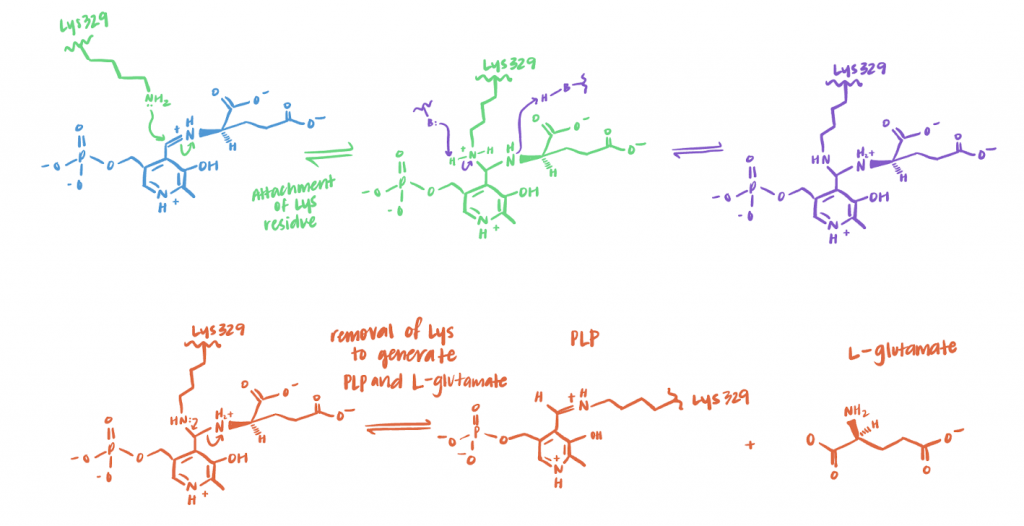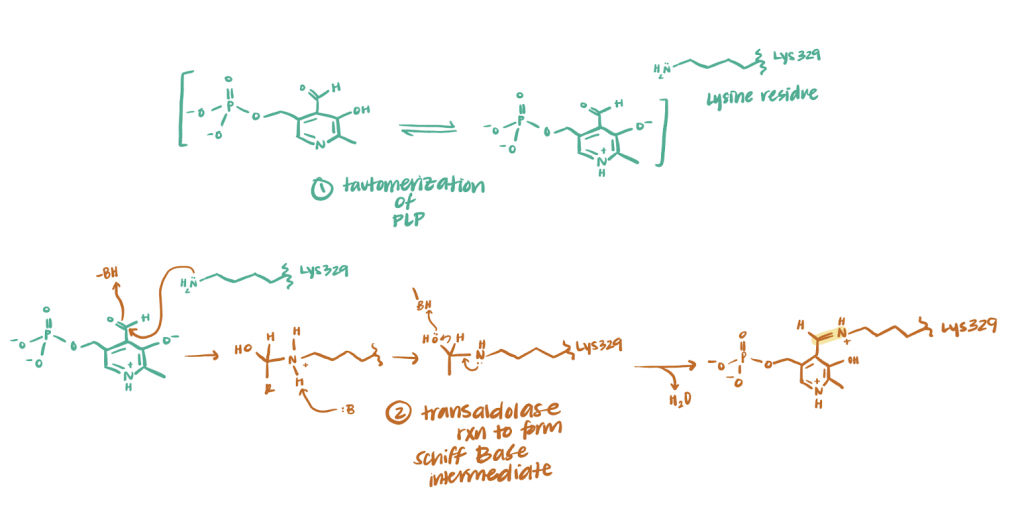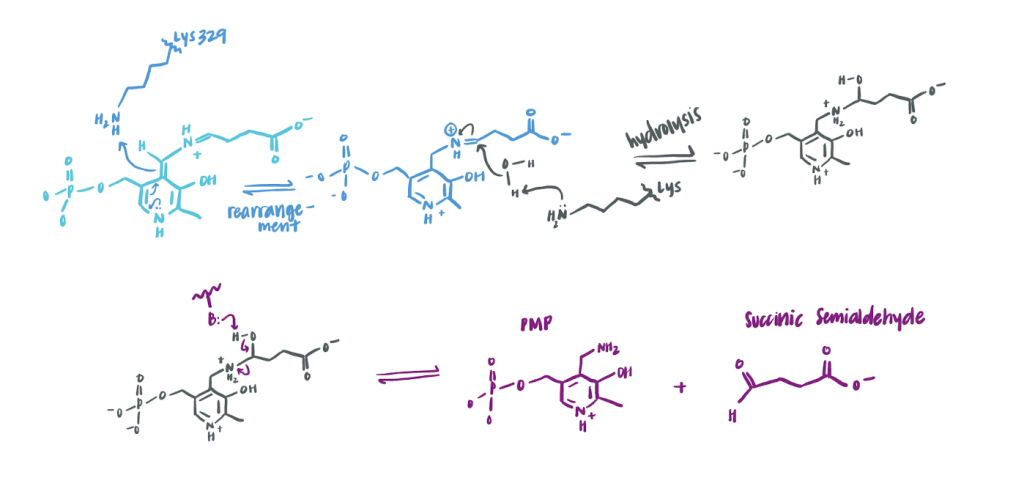
The GABAa receptors utilize the compound GABA, which binds to the receptor in order to produce a signal. The production of GABA is a process that runs parallel to the citric acid cycle in a series of reactions called the GABA shunt (shown in Figure 1). Ɑ-ketoglutarate in presynaptic neurons leaves the mitochondria and is converted into L-glutamate by GABA-T in the cytosol before eventually being converted into GABA by glutamate decarboxylase (23).
Pyridoxamine 5’-phosphate (PMP) is also used as a cofactor for this reaction, forming an imine with the ɑ-ketoglutarate that helps to stabilize the molecule as the L-glutamate is formed. Similarly, arginine residues stabilize the negative charge on the carboxyl groups of the ɑ-ketoglutarate (22).

A lysine residue in the GABA-T enzyme active site picks up a proton from the carbon adjacent to the primary amine group in PMP. The proton is then returned to the complex at the adjacent carbon, allowing the reformed amine to attack the molecule, forming an intermediate with two amines bonded to a single carbon. This then allows the amine that originated from the PMP to leave, forming the L-glutamate and pyridoxal phosphate (PLP), which is similar to PMP, but shares its amine with the lysine residue (22).

After GABA binds to the GABA receptors, the same GABA-T mechanism works in reverse to convert the metabolite into succinic semialdehyde and then succinate where it can reenter the citric acid cycle until it is needed (23).
This process also regenerates PMP from PLP to be used again. First, PLP is tautomerized which allows a transaldolase to form a Schiff base intermediate (22).

Then, the activated PLP is attacked by the GABA amine group. The aromatic ring on the PLP acts as an electron sink, allowing a quinonoid intermediate to form (22).

After an electron rearrangement, the molecule is hydrolyzed producing PMP and succinic semialdehyde (22).

Overall, this process removes α-ketoglutarate from the Krebs cycle, temporarily converts it to glutamate and which is then used to produce GABA when needed. Once this process is complete and GABA is no longer needed, the GABA is converted back into succinic semialdehyde which is returned to the mitochondria where it can reenter the Krebs cycle.
Very clear, concise, and detail section! I love the arrow pushing and the regeneration of PMP from PLP. The only suggestion I would give to this section is state the location GABA-T take place (cytosol, extracellular matrix, etc). Moreover, I think adding some transition paragraph between this section and the GABAa pathway can help to enhance the connection across the sections.
Great diagrams illustrating this mechanism. They clearly indicate your proposed mechanism and allow for easy understanding of what is going on.
Additionally, this shows that you took did in depth research on the mechanisms. If these were not previously published, you do a great job demonstrating how you believe these mechanisms to function.
Agreed. Everything looks great on this page. Arrow-pushing is shown clearly and the text between figures is clear and concise–well done.
I really like the figures on this page. They provide a great visual for the mechanism pathway the text explains. If I had to suggest something, it would be that the text that label the structures are a bit small. It may also be beneficial to provide a very brief figure description.
The walk-through of the mechanism was also really well done. Together with the arrow-pushing figures, the process very easily understood.
This page is going to be dense, but the figures do a great job of providing a visual aid. I think an overall summary at the end might help though.